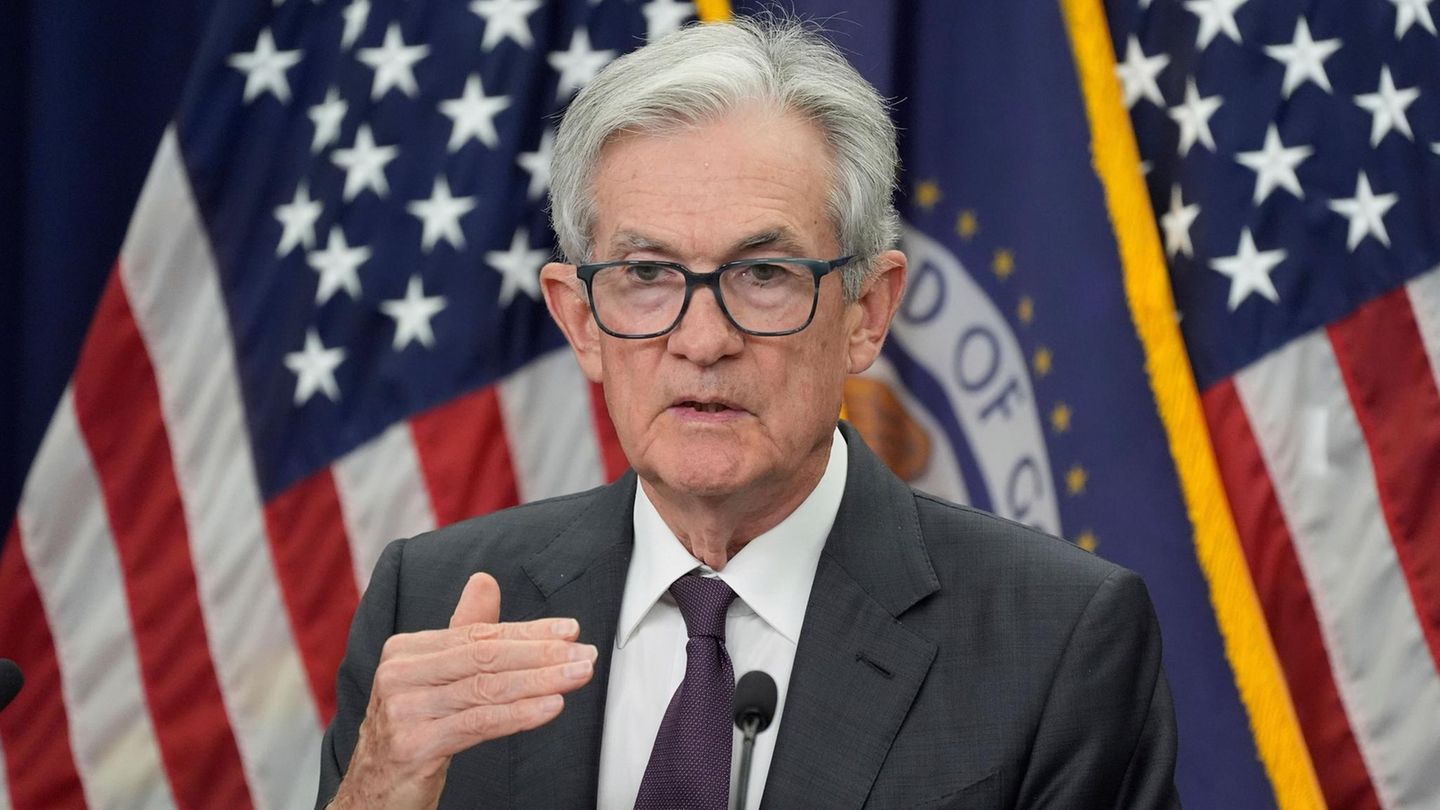For the first time since Trump’s taking office
US Federal Reserve lowers 0.25 points-which means for the euro
Copy the current link
Add to the memorial list
Since December 2024, the Federal Reserve has not touched the key interest rate. But recently the pressure on the FED grew – in addition to economic factors, Trump also played a role.
For the first time in about three quarters of a year, the US Federal Reserve has reduced the key interest rate. The Federal Reserve (FED) said in Washington said that this is now in a range of 4.0 to 4.25 percent. Many analysts had already adjusted to this after the labor market in the United States had significantly weakened. US President Donald Trump also vehemently demanded a lower interest rate-but this should only have played a subordinate role in the current decision.
With the interest rate, the Fed’s Central Bank Council tries to find a compromise solution for the increased risks on the labor market with increasing inflation. Lower interest rates tend to make loans for companies and consumers cheaper. In turn, more money in circulation can boost the economy and thereby create jobs.
An interest rate reduction also reduces the attractiveness of the US dollar-the euro will be upgraded. European tourists are likely to benefit on a trip to the USA. Even before the actual interest rate decision, the community currency of the European Union had increased around $ 1.18. So if you usually pay in euros, you will get more for your money when exchanging your dollars.
Weak development on the labor market is a reason for key early
The labor market numbers in the United States recently remained behind the expectations. In addition, employment growth in the twelve months until March 2025 was corrected by a total of 911,000 jobs – an unusually large revision.
This means that significantly fewer positions in the United States have been created than expected, and is a sign that the economy does not grow as quickly as expected. KfW economist Dirk Schumacher commented that the new employment had slowed down in such a way that inflation risks in connection with the US tariffs had taken a back seat.
Only a deviator in the vote
Of the twelve voting members, eleven voted for a reduction by an interest step, i.e. 0.25 percentage points. Only Trump confidante Stephen Miran, who was only confirmed as a temporary solution on the Fed board at the beginning of the week, had spoken out for a greater reduction-according to Trump’s wish.
Skeptics such as the democratic senator Elizabeth Warren doubt Miran’s independence and accuse him of being “Trump’s Marionette”: “Nobody – neither the American public nor investors nor investors in Germany, nor the global financial markets – will trust him as an independent voice,” she said. Miran, on the other hand, promised to “keep” the independence of the central bank.
Trump’s pressure probably rather secondary for interest decision
According to experts, the vehement pressure from the White House should have played a subordinate role in the current decision. Nevertheless, the question remains how independently the Fed will act in the future as long as Trump is president.
The Republican had repeatedly insisted on interest rate cuts-in vain, which is why he insulted Fed boss Powell several times as “fool”. With a lower interest rate, the president wants to boost the economy and make Americans easier to buy real estate. The interest burden would also decrease on the government debt. The Central Bank Council, on the other hand, wanted to act carefully in view of the increased inflation.
How is the US president and the Fed continuing?
Trump is increasingly trying to influence the Fed’s monetary policy course through personnel debates. Most recently, he got the discharge of the FED governor Lisa Cook on the way and justified this with alleged irregularities in private real estate loans. The officer defends herself legally-with success: the president recently conceded a defeat before a US Court of Appeal.
Khang Mischke / LW
Source: Stern




